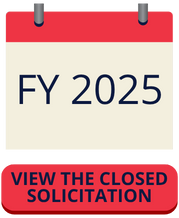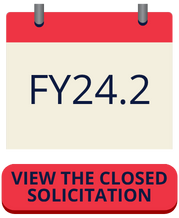Past Solicitations and Awardees
Fiscal Year Awards Description
Fiscal Year
SBIR Awards
Phase I: FY 2020 Phase I Awards
Phase II: FY 2020 Phase II Awards
Fiscal Year
SBIR Awards
Phase I: FY 2019 Phase I Awards
Phase II: FY 2019 Phase II Awards
Fiscal Year
SBIR Awards
Phase I: FY 2018 Phase I Awards
Phase II: FY 2018 Phase II Awards
Fiscal Year
SBIR Awards
Phase I: FY 2017 Phase I Awards
Phase II: FY 2017 Phase II Awards
Fiscal Year
SBIR Awards
Fiscal Year
SBIR Awards
Fiscal Year
SBIR Awards
Fiscal Year
SBIR Awards






